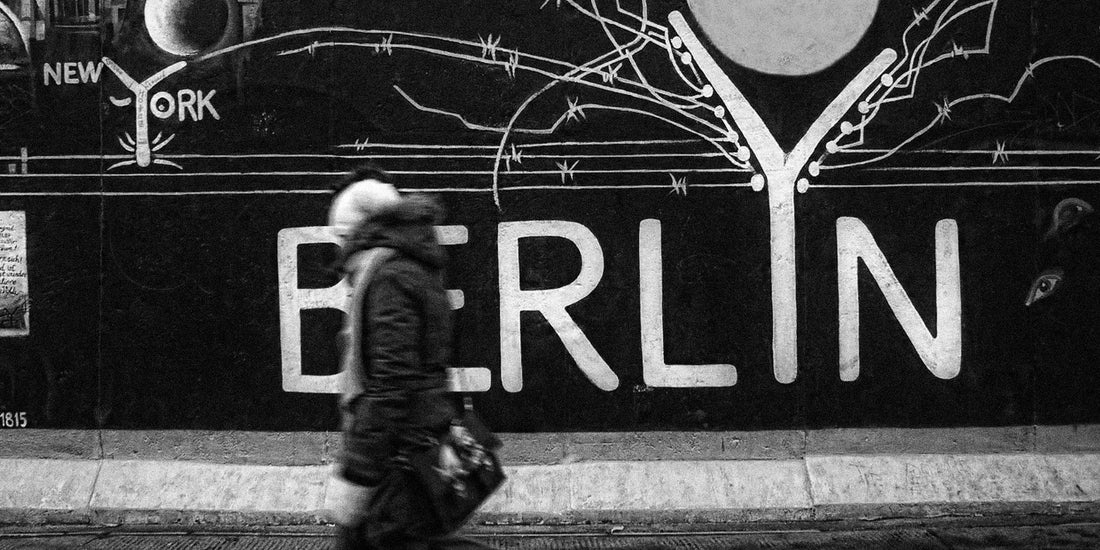
From Wall to Wild: How Berlin Turned Pain Into Art
April 3, 2025 Atelier ManganelBerlin wasn’t built to be beautiful. It was built, broken, bombed, divided, watched, and rebuilt again. It’s not a city that hides its pain—it wears it like graffiti on raw concrete. And somehow, in the rubble and ruins, something wild began to grow.
This is the story of how Berlin took the weight of history and turned it into sound, into color, into movement. How a city full of cracks became a place where creativity leaks through everything. From Wall to wild.
Post-War: A City of Silence and Scars
After 1945, Berlin was a ghost. Rubble stretched for miles. Streets led nowhere. People lived among ruins, trying to rebuild something they weren’t sure they believed in yet. And then came the split—East and West. Two cities with the same name. Two ideologies, two futures, two ways of surviving.

In the East: control, concrete, suspicion.
In the West: capitalism, chaos, and a strange sense of freedom held together by squats and cigarette smoke.
Neither side was comfortable. Both were loud in their own way.
The Wall: Concrete, Division, and an Unintended Canvas
In 1961, the Wall cut Berlin in half. What was once a street became a dead end. What was once a neighborhood became a border zone. Families separated. Lives paused. The Wall didn’t just divide space—it divided identity.

But here’s the thing about walls: they attract messages.
On the West side, the Wall filled with paint. Protest. Poems. Portraits. Rage. Love. It became a living diary. On the East side, it stayed clean—watched, patrolled, feared. But inside the silence, something else stirred.
Punk, Noise, Rebellion
By the ’70s and ’80s, Berlin was cracking open again. West Berlin became a magnet for draft dodgers, artists, queers, outsiders. It was still technically at war, but spiritually post-everything. Cheap rent, empty buildings, and no future—perfect conditions for creation.

Bands like Einstürzende Neubauten made music out of metal scraps. Squats like Tacheles became art factories. East Berlin, meanwhile, birthed its own underground—secret punk gigs, silent protests, samizdat zines passed hand to hand under Stasi eyes.
Art here wasn’t just decoration. It was resistance. And it still is.
The Fall: 1989 and the Sudden Future
The Wall fell, but the weird stayed. Berlin didn’t rush to gentrify. It sat in its strangeness. Artists flooded in. Techno moved into power plants. Murals covered monuments. Whole clubs grew out of ruins.
The East Side Gallery, a stretch of Wall now covered in murals, became both memorial and celebration. The city didn’t erase its trauma—it painted it. Layered it. Claimed it. Gave it rhythm.

Now: The Wild Still Grows
Berlin’s not post-pain. But it’s post-pretending. You can still see bullet holes in building walls. Still find abandoned bunkers under your feet. But above ground, there’s color. Movement. Noise. A refusal to forget—but also a refusal to stay stuck.
You see it in the street art, in the protests, in the performances that make no sense but feel important. You see it in the repurposed buildings, the ghost stations turned art shows, the stairwells that double as galleries.
Berlin doesn’t build monuments to triumph. It builds space. For contradiction. For memory. For wild, weird, beautiful expression.
Because here, pain didn’t just fade. It got loud. It got painted. It got danced through. And in doing so, it became something else entirely.








